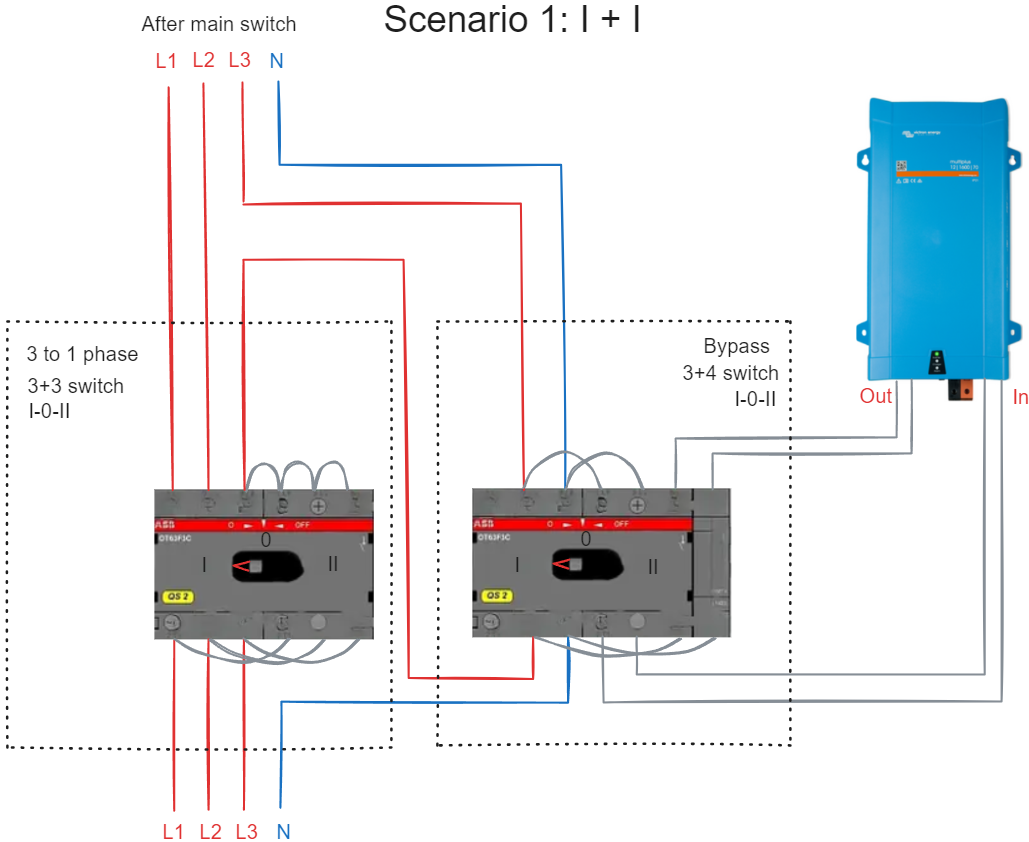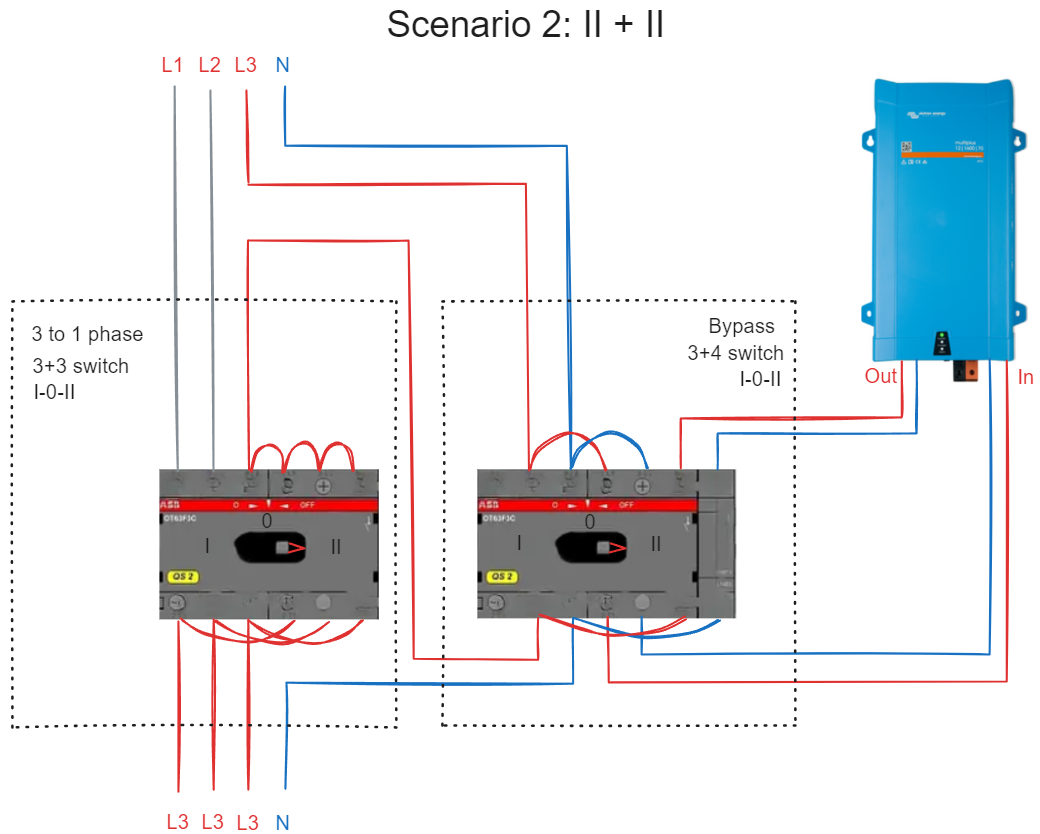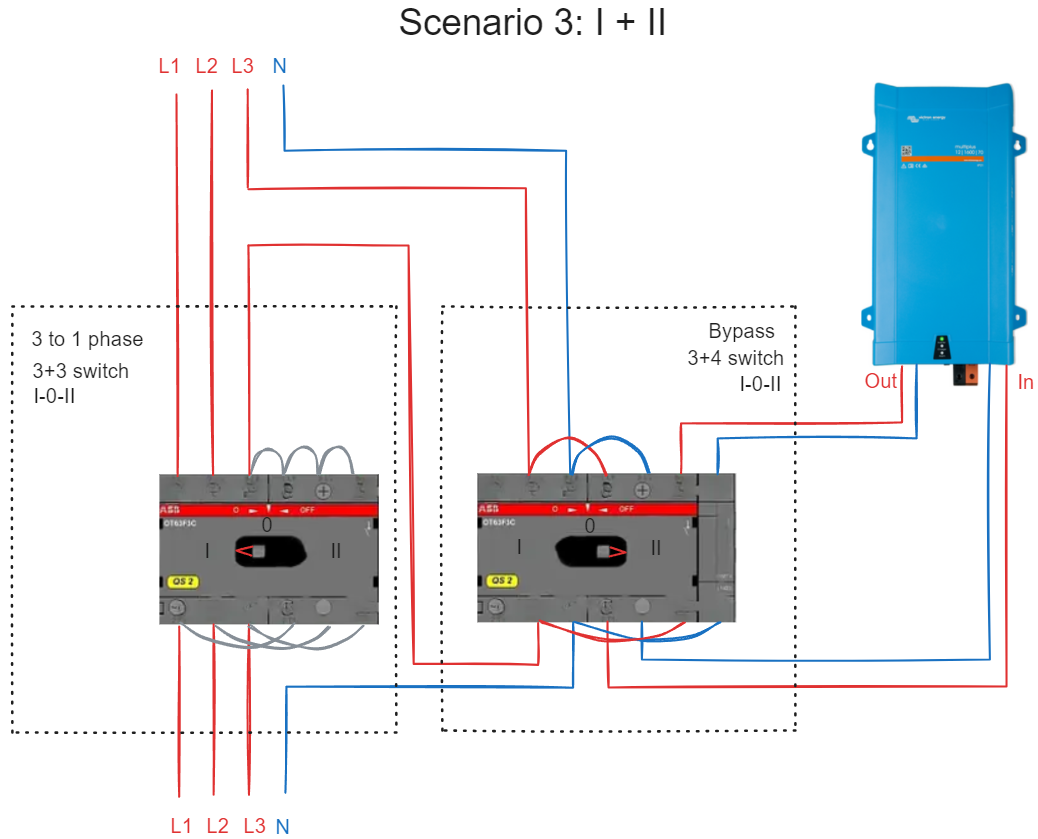This is a solution for emergency cases when no power available and loads are within 1200W.
I have 3 phase power in my apartment and Multiplus II 48/1600 for backup. The idea is to put 2 switches (3+3 and 3+3 with extra module) in the middle after the main switch like this (Scenario 1). When they're both in position "I", all 3 phases work as usual, Multiplus isolated.

When grid power is gone, I can manually switch both to position II (Scenario 2). Now the apartment is powered from L3 that is backed up by Multiplus.

1. What happens if the first switch is turned to position "I" before the bypass by mistake (Scenario 3)? In this case N goes through Multiplus, but all 3 phases connected.

I see 4 possibilities if load applied to other phases:
- Multiplus is fried;
- Multiplus falls to error mode;
- works fine if total loads are within 16A (Multiplus transfer switch limitation);
- all works fine.
I'm not an electrician and made this scheme intuitively.
2. I'd appreciate if someone could share a ready-made solution.


